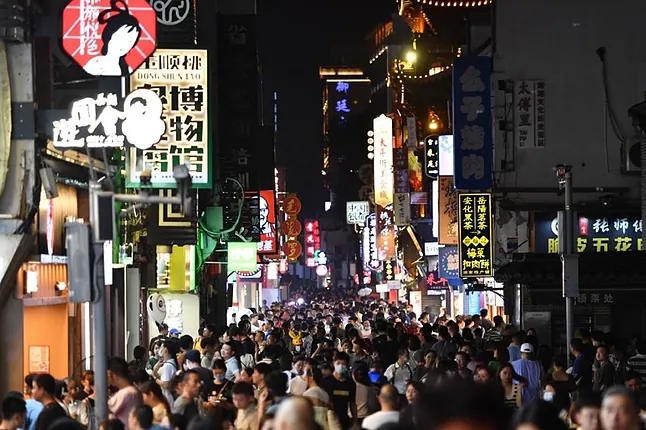The residents of Changsha, on the banks of the Xiang River, say that this city must be experienced from 6:00 p.m. until 6:00 a.m., when the last neon light goes out. The capital of Henan province pulsates amid the smoke of late-night food stalls and the hustle and bustle of bars. Its streets blend the echoes of a revolutionary past - Mao Zedong, founder of the People's Republic of China, was born and studied here - with the consumer fever of young people from all over the country who pilgrimage to a place considered the entertainment paradise for Generation Z.
After midnight on a Thursday, the central Wuyi Square area is overflowing with markets dominated by the smell of popular stinky tofu, crowded terraces, long lines at restaurants famous for serving steamed fish head with fermented chilies, karaokes with music at full volume, and influencers live streaming from any picturesque corner they find.
Changsha maintains the vibe of the rebellious city it was in the early 20th century; a hotbed of strikes, student movements, and intellectuals who would participate in the founding of the Chinese Communist Party (CCP) and later be purged by Mao for trying to aspire to a too modern China.
Its geographical position, at a crossroads of commercial and river routes in central China, made this city an important strategic point during the civil wars and resistance against the Japanese invasion, leading local authorities to set fire to their own city because they preferred to see it destroyed rather than in the hands of the Japanese. Changsha was quickly rebuilt and, in the 1990s, during the country's reform and opening-up transition, it was the epicenter of major Chinese entertainment phenomena with television programs that catapulted generations of music bands, celebrities, and presenters to fame.
Now, at a time when weak consumption is increasingly weighing on the world's second-largest economy, which also grapples with excessive competition in the domestic market, the chronic crisis in the real estate sector, and uncertainty due to the trade war led by U.S. President Donald Trump, Changsha emerges as a prosperous model of nighttime economy that the government is promoting nationwide.
From Beijing's perspective, for the younger generation, a disillusioned generation because their job expectations are not being met (youth unemployment rate in August rose to 18.9%, the highest level since June 2023 when it reached a historic high of 21.3%), nightlife is encouraged to stimulate spending.
This year, the State Council published a document advocating for the expansion of culinary, cultural, and tourist activities at night. According to a report from the Ministry of Commerce, 60% of consumption spending currently occurs at night. Per capita nighttime tourism spending more than triples daytime consumption.
Several major cities across the country have committed to growing their nighttime economy (from 6:00 p.m. to 6:00 a.m.) taking Changsha's hustle and bustle as an example. In Beijing, restaurants, museums, and shops offer discount coupons after mid-afternoon, while Shanghai has allowed the resurgence of street stalls that were banned some years ago for giving, according to local politicians, a "bad image" of the country's financial capital. In this mega city, local authorities have issued new regulations so that, in the most touristic areas, some shops, museums, or shopping centers remain open until 2:00 a.m.
Chinese consumers are still in savings mode, and this is dragging down the economic growth of the Asian giant. During the first week of October, during the eight-day long holiday celebrated in China - coinciding with National Day and the Mid-Autumn Festival - the average spending of Chinese tourists hit a three-year low despite a record 2.432 billion passenger trips, a year-on-year increase of 6.2%.
China intensified its stimuli at the end of 2024 and has maintained specific product exchange programs this year to boost retail sales. However, finding the recipe to reverse the trend of weak consumption will be a key point in the conclave that Chinese leaders will hold on October 20 in Beijing to discuss the next five-year plan, the project that sets economic, political, and social objectives. A model that China adopted from the Soviet Union, where the first two plans triggered a wave of industrialization that Chinese leaders successfully emulated.
